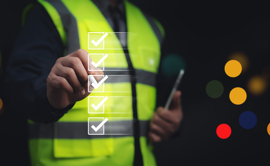Cyber attack – the war at your own desk
Published: 24 March 2022
As global tensions rise, it’s inevitable that cyber warfare will be used to target organisations across the world. Cyber-attacks are becoming increasingly sophisticated and widespread, impacting critical infrastructure and industries. These threats can stem from state-sponsored attacks or groups aiming to exploit vulnerabilities in systems everywhere, underscoring the importance of robust cyber defence measures for organisations.
However, it is possible to stay safe if we remain vigilant and adopt some crucial security protocols. Doing so not only protects you, your colleagues, and your clients, but plays a small but crucial role in resisting the spread of an illegal war.
Step 1: MFA
Turn on Multi-Factor Authentication (MFA). MFA provides an additional layer of protection to an account and helps to stop hackers from breaking into those accounts, even if they have your password. It works by asking for more information from you to prove your identity – such as a code that is sent to your phone. Adding MFA onto any personal or work accounts and emails is a great way of staying secure.
Step 2: Strong and separate passwords
Use strong and separate passwords for different accounts. If a hacker breaks into your account, they may be able to do anything from resetting your password, to accessing information about you, and even the business you work for. Passwords must be strong and different from all other accounts that you use. Using three random words is an ideal way of creating a password because it is both robust and memorable.
Step 3: Save passwords to your browser
This will help to make sure that you do not lose or forget your passwords, as well as protecting you from some cybercrime, such as fake websites. However, do ensure that you protect your saved passwords in case your device is lost or stolen: lock your device when it is not being used, use a strong password on your device, or use MFA or biometrics on the device. Even better, do all of these.
Step 4: Update, update, update
If a device has out-of-date software, apps, or operating systems, then it is vulnerable to security exploits. By updating your device with updates that companies provide, it helps to remove these exploits and keep your device safe. Many devices need to be updated manually; however, you may get reminders on your device to do so. Do not ignore these reminders and check for updates frequently.
Step 5: Back up your data
Keeping a regular backup of data means that you have a recent version of your saved infromation. This helps you to recover data quicker if a device has been lost or stolen. Remember that automatic backups can be used to save information to cloud storage regularly without you having to remember.
Step 6: Beware convincing phishing emails
Phishing emails are one of the biggest dangers of being online. These emails are designed to look genuine, but can contain malicious links to malware, or urge you to carry out a task such as providing important details about yourself or the business you work for. When going through your emails, always think before you act. Be wary of communications that implore you to act immediately or offer something too good to be true. Pay close attention to potential spelling and grammar errors, links that lead off to websites, and the person that is sending the email. If you are in doubt, report the email or try to verify an email request by contacting a company/person directly. Hackers can create email accounts that take on another person’s identity, so if in doubt, pick up the phone or reach out.
More from resources...
Here to achieve, validate and demonstrate compliance
Our expert consultants are available to ensure compliant and effective processes for asset design, build, maintenance, and operation.
Contact our experts





